
Maharsi Valmiki
A commemorative postage stamp on Adi Kavi (first poet) Maharshi Valmiki, author of first epic poem, Ramayana in Sanskrit, issued on Pargat Diwas (Valmiki Jayanti) :

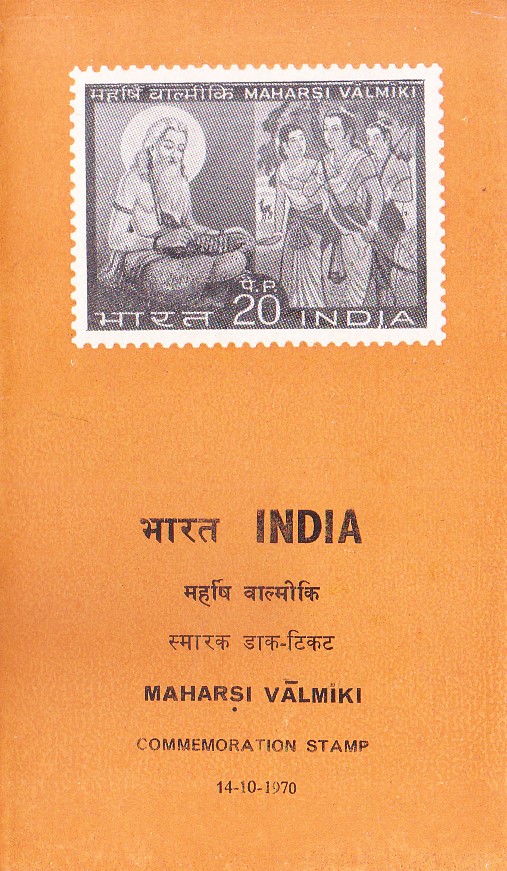 Issued by India
Issued by India
Issued on Oct 14, 1970
Issued for : The Posts & Telegraphs Department is happy to bring out a special commemorative stamp in honour of Maharsi Valmiki, the reputed author of the epic – Ramayana, on the occasion of his Jayanti Celebration on the 14th October, 1970.
Design : The design of the stamp is horizontal and depicts Maharsi Valmiki and the main characters of Ramayana “Rama, Sita and Lakshman“.
Type : Stamp, Mint Condition
Colour : Red Purple
Denomination : 20 Paise
Overall Size : 3.91 x 2.90 cms.
Printing Size : 3.56 x 2.54 cms.
Perforation : 13 x 13
Watermark : Printed on unwatermarked adhesive stamp paper
Number Printed : 30,00,000
Number per issue sheet : 35
Printing Process : Photogravure
Designed and Printed at : India Security Press
About :
- The Sage Valmiki is the reputed author of the most popular Sanskrit epic – Ramayana. He is stated to be a contemporary of Rama, the hero of his epic. Ramayana is called the Adikavya – the first poetry in classical Sanskrit and in its present form is dated variously by scholars like Prof. Jacobi as 6th Century B.C., by Dr. Monier Williams as 5th Century B.C., by Dr. Keith as 4th Century B.C. and by Dr. Winternitz as 3rd Century B.C. Its story is older than that of the other great epic, Mahabharata, the authorship of which marks the end of the Vedic era. It would, thus, appear that the present form of Ramayana in proper classical Sanskrit was due to some re-editing accomplished in the Valmiki School of tradition by a later rishi. Thus, the date of Valmiki is unknown and uncertain.
- There are several anecdotes narrated about his life. One of them states that he was a bandit in his early life and repented his actions when it was pointed out to him that he alone would answer for his misdeeds, since none of those sharing in his earnings would share his misfortunes, when they would inevitably arrive. The origin of this fable cannot be ascertained, though it finds a place in a later composition called the ‘Adhyatma-Ramayana‘.
- His very name is said to be a later acquisition and not his original name. Practising penance for his misdeeds, he became enveloped by an ant-hill (Valmika) from which he had to be dug out and hence he came to be known as Valmiki – born from Valmika. As a sage, he had his hermitage on the bank of the river Tamasa, tributary of Ganga. When one day, he saw a hunter killing the male bird from a mating Krouncha (Curlew) couple, he uttered his famous sloka out of anguish :
- मा निषाद प्रतिष्ठां त्वं अगमः शाश्वतीः समा: ।
यत् क्रौञ्चमिथुनादेकं अवधी: काममोहितम ।। - (Oh hunter, you shall not attain a stable state for eternal years; because you have killed the male bird in love out of the couple of the Krounchas.)
- मा निषाद प्रतिष्ठां त्वं अगमः शाश्वतीः समा: ।
- This utterance apparently started the classical अनुष्टुप् metre in its refined form. The Sage, however, became restless immediately after the utterance of sloka on account of the torment he thereby inflicted due to his anger on the hunter. Tradition recites :
- श्लोकत्वमापद्यत यस्य शोक: ।
- Whose grief took the form of a Sloka – a verse, and as an antidote, he was advised by the Lord Creator to compose the story of Rama, the King of Ayodhya.
- Ramayana has it that later on when Rama abandoned his queen Sita out of his deference to popular comment, the pregnant queen found her way to the hermitage of the Sage Valmiki and there gave birth to her twins लव (Lava) and कुश (Kusha). The princes in exile were then taught all the lore which a prince should master, all the arts of the wise and the crafts of the warrior and among them the sage taught them to recite his epic composition, the Ramayana, without their knowing that this was the story of their own illustrious father. The last Volume – Uttarakanda was hidden from them.
- Even Ramayana tells us no more about this great poet but his influence through his epic has been everlasting. Several later poets have been inspired to re-tell the story in their own way and even today recitations from Ramayana are carried on at various homes and shrines. Valmiki‘s Ramayana will always be one of the world’s greatest epics.


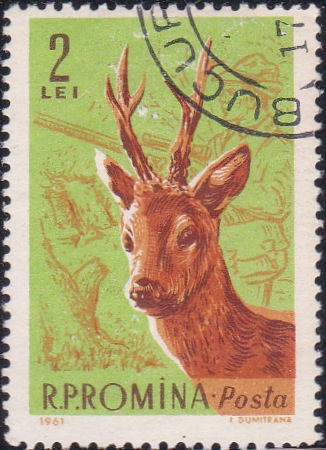
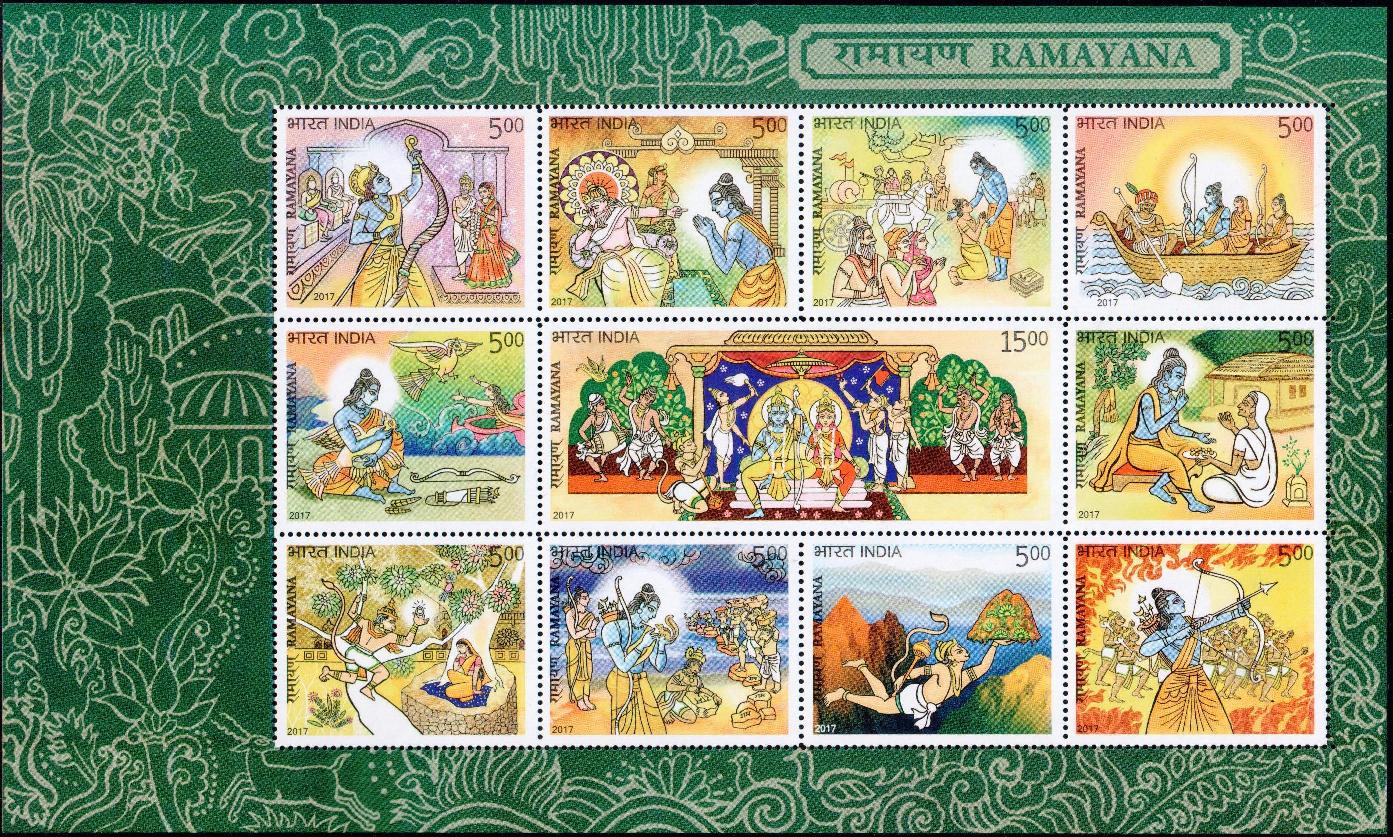
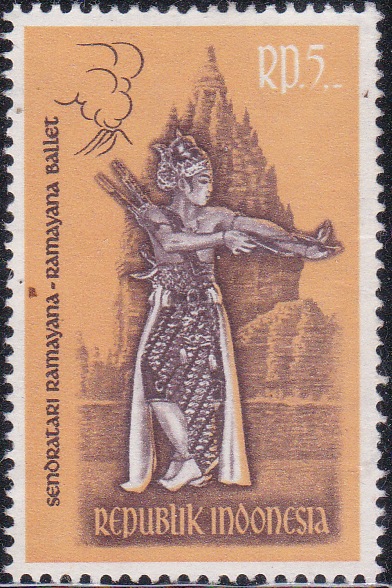

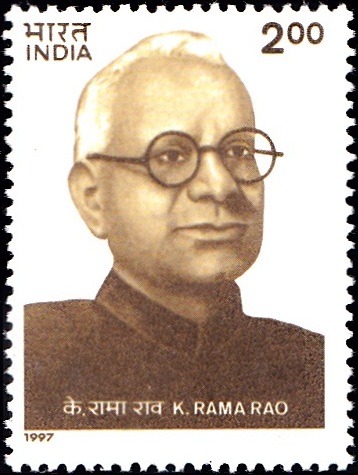

[…] carrying the people of different cultures along. Ramayana, the story of Ram composed first by Valmiki around 500 b.c., has possibly many retellings before that as well as afterwards. Such is the power […]
[…] limelight at the age of twenty-seven was his translation from Sanskrit into Malayalam of Valmiki‘s Ramayana. Significantly, his last major work was also a translation, that of Rig Veda […]
[…] Ramayana of Valmiki […]
[…] story of Rama retold in Tamil. Though the theme is the same as that of the original work of Valmiki in Sanskrit, it acquires in Kambar‘s hands quite a new artistic beauty and grandeur […]
[…] (रामो विग्रहवान् धर्मः) means Shri Ram is Dharma incarnate. Maharishi Valmiki called Shri Ram ‘Dharmavigrah’ in Ramayana, God incarnated for the welfare of the people. […]